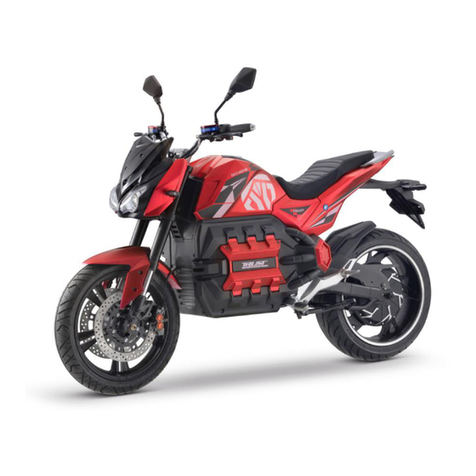ATTENTION: Do not exceed speed limits and brake carefully. Always
use the side stand or center stand when parking your motorcycle.
ATTENTION: Failure to follow the instructions below may result in
serious injury, personal injury and/or damage to the motorcycle.
General Notice
Please read this User Manual carefully for the correct use of your
motorcycle.
For your safety, please check that all elements of the motorcycle are in
good condition according to this User Manual before driving. Contact your
distributor in case of detecting any problem
.
Please respect the traffic regulations. Slow down on slippery roads and/or
in bad weather to ensure adequate stopping distance
.
Please pay special attention in flooded areas, it could cause rust or failure
of the motor, battery or other parts if the water exceeds the wheel axle
.
To ensure the safety of others and the integrity of your motorcycle, do not
let people who are not trained to drive it.
For more information, please consult our website: www.dayimotor.com
3
Precautions
Driver and Passenger
This motorcycle is not designed for more than 2 people.
Road conditions
This motorcycle is not designed for off-road use.
This User Manual should be considered as an essential part of the
documentation for this motorcycle. If ownership of the motorcycle is
transferred, this Owner's Manual must also be transferred to the new owner.
Reproduction or reprinting of any part of this User Manual is strictly
prohibited.























